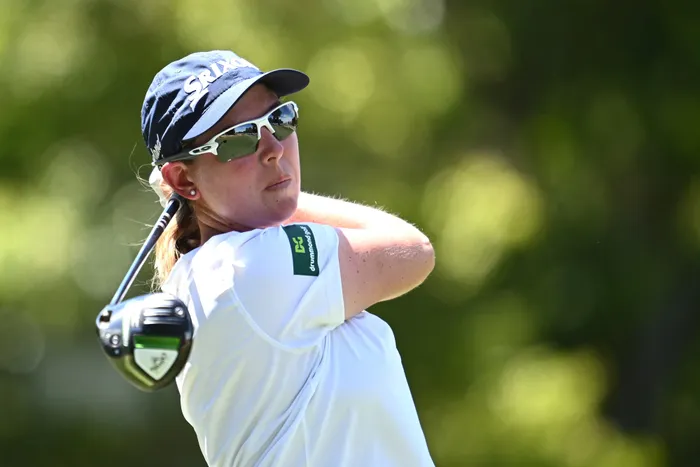Stop overswinging in golf: Key techniques for better control
Golf

Asheigh Buhai make takes a swing. Ashleigh Buhai tkes a swing. | File
Image: File
To stop an overswing in golf, it's essential to understand the fundamentals of the swing and make adjustments to your technique.
Overswinging occurs when the golfer's arms go too far back in the backswing, causing a loss of control and poor impact position. This can lead to inconsistent shots and reduced accuracy.
To combat overswinging, focus on making a compact swing. Aim for a shorter, wider backswing to maintain control and generate more power.
As you swing back, focus on turning and loading your weight onto your right side, keeping your left shoulder just inside your right foot.
Impact position is also crucial. Prioritize getting your body and club in sync to compress the golf ball and generate maximum power and control.
Proper weight distribution is vital to achieve this. Avoid reverse pivoting by shifting your weight to your right side during the backswing, and then transferring it back to your left side during the downswing.
Softening your grip and reducing arm tension can also help prevent a runaway backswing. Focus on a "wide, not long" approach to stop the club from going too far back.
Ensure your body turn supports your arm swing by building a strong lower-body pivot and rotating fully to maintain control.
Using training aids like an elastic band can help create tension and practice coiling your body. The towel-wringing technique can also help develop a proper coil motion.
By focusing on maintaining a consistent swing plane and avoiding deviations from the target line, you can improve your overall swing and reduce overswinging. Catch you on the fairways!
-Sewgolum is PGA AA golf professional and a golf pro for Saudi Aramco. He was voted in the Top five of the International Golf PGA Pro 2022.